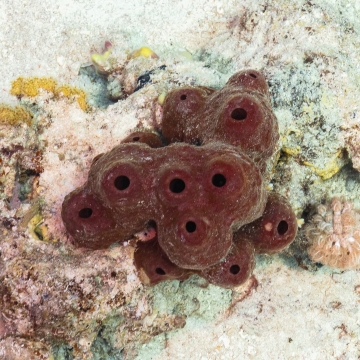760525_Toxic Sponge_360 px width.jpg

A rare species of sponge, similar to the one pictured, contains high levels of a toxic metal in its tissue. Credit: Diego Delso, CC BY-SA 4.0
A rare species of sponge found in the Red Sea and Indian Ocean has a rare distinction: It has levels of a metal that are thousands of times higher than ever seen in any other organism. And most of that metal is stored away by a type of bacteria that lives inside the sponge.
Sponges are filter feeders—they draw in water, filter out food and other solid bits, then shoot the water and solid particles back into the sea. Some contaminants can lodge inside them. Some studies have found high levels of arsenic, barium, and other toxic substances.
A more recent study looked at the species called Theonella conica. It’s found down the eastern coast of Africa. Up to 40 percent of its body weight consists of bacteria and other microscopic organisms, many of which have a symbiotic relationship with the sponge.
Over two decades, researchers collected specimens from Zanzibar, off the southeastern African coast, and the Gulf of Aqaba, at the northern tip of the Red Sea.
When they analyzed the sponges, the scientists found extremely high levels of molybdenum. The metal is important for the metabolism of people and other animals, but only at low levels. At high levels it’s toxic. So the metal may help protect the sponges from predators.
The element was concentrated in one of the species of bacteria inside the sponge. It changes the material into a harmless mineral, which is flushed back into the water—keeping the sponge safe from both predators and the toxic element.

